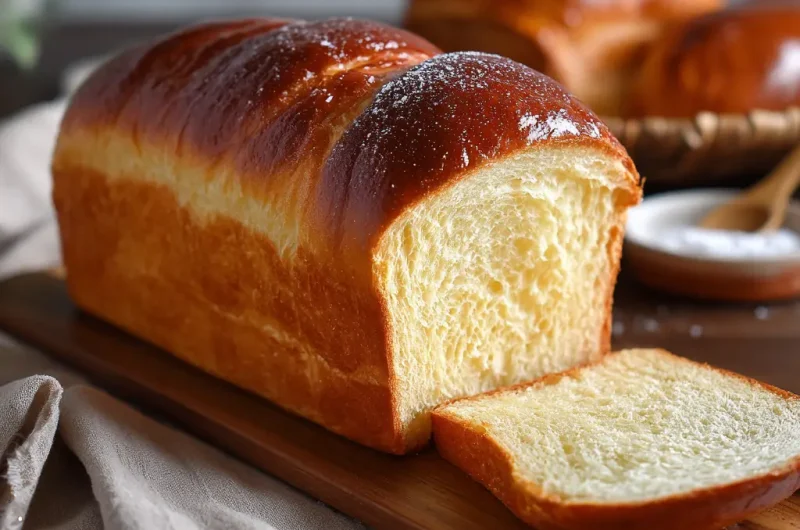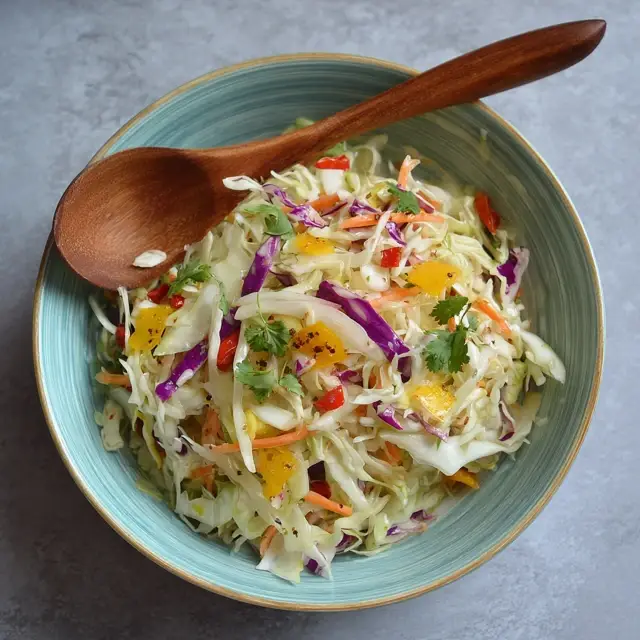Milk Bread Recipe: How to Make Soft and Fluffy Homemade Milk Bread
Introduction
Milk bread has earned a special place in kitchens around the world, celebrated for its soft, pillowy texture and slightly sweet flavor. Unlike regular bread, milk bread boasts a tender crumb and a golden crust that almost melts in your mouth. This bread is perfect for sandwiches, toast, or even just enjoyed plain with a pat of butter. The secret to its unique texture lies in the use of milk, which enriches the dough and adds a subtle sweetness. For many, milk bread is not just food—it is comfort, nostalgia, and a touch of elegance on the table. Making milk bread at home might seem intimidating, but with the right ingredients and a bit of patience, anyone can master this delightful loaf. Whether you are a baking novice or a seasoned baker looking to try something new, this guide will walk you through every step with clarity and warmth.

Ingredients Needed
The ingredients for milk bread are simple, wholesome, and easy to find. Here is a clear breakdown of what you will need, along with their calorie counts to help you keep track of your intake:
| Ingredient | Quantity | Calories (approx.) |
|---|---|---|
| All-purpose flour | 3 ½ cups (420g) | 1500 kcal |
| Whole milk | 1 cup (240ml) | 150 kcal |
| Sugar | ¼ cup (50g) | 190 kcal |
| Unsalted butter | 4 tbsp (56g) | 400 kcal |
| Active dry yeast | 2 ¼ tsp (7g) | 20 kcal |
| Salt | 1 tsp (6g) | 0 kcal |
| Egg | 1 large (50g) | 70 kcal |
Milk bread uses whole milk to create a tender dough, while butter adds richness and softness. Sugar not only sweetens the bread but also helps activate the yeast. The egg contributes to a beautiful golden crust and improves the bread’s structure. Salt balances the flavors and strengthens the gluten network in the dough.
Step-by-Step Cooking Instructions
- Activate the yeast: Warm the milk slightly until it is lukewarm, about 110°F (43°C). Pour the milk into a small bowl, add the sugar, and stir until dissolved. Sprinkle the yeast over the surface and let it sit for 5 to 10 minutes until it becomes foamy. This step ensures your yeast is alive and ready to make the bread rise.
- Mix the dough: In a large mixing bowl, combine the flour and salt. Create a well in the center and add the activated yeast mixture along with the egg and softened butter. Stir everything together until a rough dough forms.
- Knead the dough: Transfer the dough to a clean, lightly floured surface. Knead by hand for about 10 minutes or until the dough is smooth and elastic. Kneading develops gluten, which gives milk bread its characteristic chewiness and structure.
- First rise: Place the dough in a lightly greased bowl, cover it with a damp cloth or plastic wrap, and let it rise in a warm place for about 1 to 1 ½ hours, or until it doubles in size.
- Shape the dough: Gently punch down the risen dough to release air bubbles. Divide it into equal portions if making smaller rolls or shape it into a loaf. Place the dough in a greased loaf pan or on a baking tray lined with parchment paper.
- Second rise: Cover the shaped dough and allow it to rise again for 30 to 45 minutes until it nearly doubles in size.Pair this meal with White Bread for a complete experience.
- Bake: Preheat your oven to 350°F (175°C). Bake the milk bread for 25 to 30 minutes or until the top is golden brown and the loaf sounds hollow when tapped.
- Cool: Remove the bread from the oven and let it cool in the pan for 10 minutes. Transfer to a wire rack to cool completely before slicing.

Tips for Customizing the Recipe
Milk bread is versatile and can easily be adapted to suit your taste and dietary needs. For extra softness, try adding a tablespoon of honey or replace some of the milk with cream for a richer dough. Those who prefer a dairy-free version can substitute milk with almond or oat milk and use coconut oil instead of butter. To add a nutty crunch, sprinkle some toasted sesame or poppy seeds on top before baking. If you love flavored bread, gently fold in cinnamon and raisins or mix in some shredded cheese for a savory twist. When experimenting, keep the dough’s hydration consistent to maintain that signature softness. Finally, if you want a shiny crust, brush the top with an egg wash right before baking.

Nutritional Information
Milk bread is not only delicious but also offers moderate nutrition that can fit well into a balanced diet. Each serving (approximately one slice or 50 grams) contains:
The presence of milk and butter increases the fat content slightly but also enhances flavor and texture. Milk bread provides a good source of energy, making it ideal for breakfast or as a snack. While it is not particularly high in fiber, pairing it with fresh fruit or vegetables can create a nutritious and satisfying meal.
Serving Suggestions
Milk bread shines in many culinary applications. Freshly sliced, it makes an excellent base for buttery toast topped with jam or honey. Use it for sandwiches filled with deli meats, cheeses, or grilled vegetables for a soft and comforting meal. For breakfast, serve milk bread French toast dipped in cinnamon egg batter and topped with syrup or fresh berries. Toasted milk bread also pairs wonderfully with creamy soups and stews, offering a delicate texture to soak up flavors. It can be transformed into bread pudding or used to make gourmet grilled cheese sandwiches. When sharing with guests, arrange slices on a platter with assorted spreads and toppings for a charming bread board.
Milk Bread Recipe: How to Make Soft and Fluffy Homemade Milk Bread
Course: Blog8
servings20
minutes30
minutes180
kcalIngredients
3 ½ cups (420g) all-purpose flour
1 cup (240ml) whole milk, lukewarm
¼ cup (50g) sugar
4 tbsp (56g) unsalted butter, softened
2 ¼ tsp (7g) active dry yeast
1 tsp (6g) salt
1 large egg
Directions
- ections
- Warm the milk until lukewarm. Mix in sugar, then sprinkle yeast on top. Let it foam for 5-10 minutes.
- In a large bowl, combine flour and salt. Make a well in the center.
- Add the foamy yeast mixture, egg, and softened butter to the flour. Stir until a dough forms.
- Knead the dough on a floured surface for 10 minutes until smooth and elastic.
- Place dough in a greased bowl, cover, and let rise in a warm spot for 1 to 1 ½ hours, or until doubled in size.
Recipe Video
Notes
- For extra softness, brush the top with melted butter right after baking. You can substitute milk with plant-based alternatives to make a dairy-free version. Make sure your milk is not too hot when activating yeast, or it may kill the yeast and prevent rising.
Frequently Asked Questions (FAQs)
What makes milk bread different from regular bread?
Milk bread uses milk and butter, which create a softer, richer texture and a slightly sweet taste compared to standard bread made with water.
Can I use instant yeast instead of active dry yeast?
Yes, you can substitute instant yeast in the same amount. It can be mixed directly with the dry ingredients without activation in milk.
How should I store milk bread?
Keep milk bread in an airtight container or wrapped tightly in plastic wrap at room temperature. It stays fresh for up to 3 days or can be frozen for longer storage.
Is milk bread suitable for people with lactose intolerance?
Traditional milk bread contains dairy, but you can easily substitute lactose-free milk or plant-based milk alternatives to make it lactose-friendly.
Can I make milk bread without an oven?
Milk bread can be steamed or cooked in a slow cooker, but the texture and crust will differ from oven-baked versions.
Conclusion
Milk bread offers a beautiful balance of softness and flavor that turns everyday meals into something special. Its tender crumb and subtle sweetness make it a favorite for all ages. Taking the time to make milk bread at home is a rewarding experience, filling your kitchen with the comforting aroma of fresh baking. Whether you enjoy it plain or dressed up with your favorite toppings, this bread adds warmth and satisfaction to every bite. Baking milk bread brings joy, a sense of accomplishment, and a delicious loaf that everyone will love. With patience and practice, you can create this delightful bread anytime, sharing a little piece of homemade goodness with those you care about.







